The electromagnetic crane
The extraordinary group of electromagnetism in collaboration with the group of mechanics has decided to develop a project that would involve both areas: a lifting magnet.
Electromagnetic part
The basic idea was to take advantage of a powered coil to generate an electromagnetic field that would allow to raise a small metal object, a bar of iron, and place this coil hanging by a mechanical crane. We bought two coils and subsequently built a rectangular prism and iron to be inserted between them to increase the intensity of the magnetic field generated.
We decided to connect the coils in parallel so that we can get more current (due of the lower resistance that sees the generator with this link) to generate a magnetic field strong enough to lift the object that we set (iron rod).
Mechanical part
We had to design and build a mechanical structure that was able to keep raised the coil and to be able to move about a vertical axis. To this end and outlet of inspiration profile of a crane. To build it and used a simple team from steel shelf and that was then welded to a metal plate that will act as a base. As in a normal crane, we calculated the counterweight needed to keep our lifter in balance, in this case it will be placed at the base of the arm at a given distance from the axis.
To allow the movement of the coil along the vertical axis of the same, we have attached to a hook tied to a galvanized steel cable coated with plastic, which is controlled manually by a handle. The cable will go through various pulleys welded to the arm in certain positions, of particular importance that the corner post and the end.
Tools:
· Two copper coils 1600 turns, with a maximum current intensity of 1 A, the mass of 220 g each; · Prisma rectangular iron, internal coils, mass 330 g; · Finger iron mass of 190 g · Two pulleys · Steel wire galvanized plastic coated 2 m · Team mantel measures 315x489x4 cm · Crank · metal hook · Counterweight 2620 g · generator voltage ( 30 V max) · Blades of power;
Calculations
Electromagnetic accounts:
I = 0.7 A, V = 30V, Two coils having coils each Ntot = 1600 N = 3200 turns, length l = 0.07 m, m = 220g; MTOT = 770g; generated magnetic field H = (N * I) / l = 32000H; B = H * μ, with a μ relative to a ferromagnetic material, then of very high value, oscillating between 103 and 104, where as the lowest value we made an estimate and obtained a value of B of 1 , 5T approximately equal to the saturation of the iron.
Mechanical Balances:
The calculation of the most challenging in the mechanical part and was find the mass to be used as a counterweight to the base to keep the balance of the arm to do so, we used the third cardinal equation of statics concerning the balance between the moments, and we got that: mcontr = [(mpiece mbobtot +) * + doriz masseoriz * dbaror] / dcontr = [(190 +770) * 320 +313 * 160] / 150 = 2620g

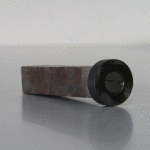
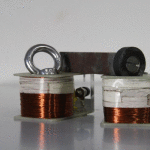
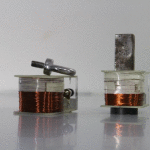
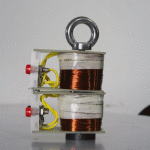
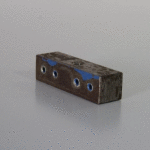

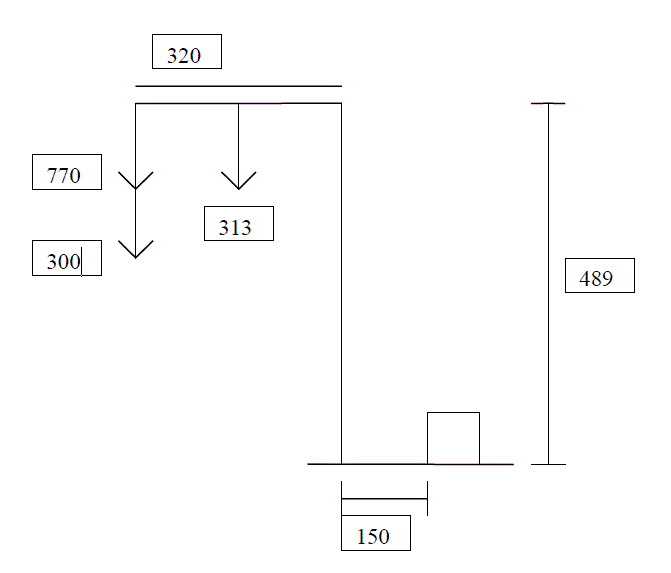
Leave a reply
You must be logged in to post a comment.